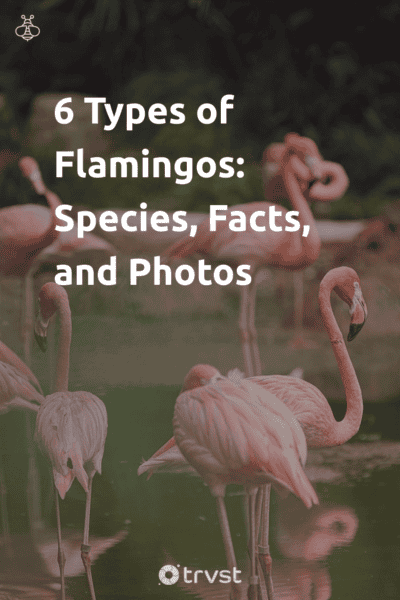6 Types of Flamingos: Species, Facts, and Photos
The flamingo, recognized through its deep to pale pink plumage, offers more than just a striking silhouette. It's a bird of diversity, showing variations in size and color across the six species. This article explores these flamboyant and gregarious birds, detailing how to identify them and where they came from.
Flamingo Classification
Flamingos belong to the only family in the Phoenicopteriformes order, Phoenicopteridae. The International Ornithological Committee lists six flamingo species in three genera: Phoenicopterus, Phoeniconaias, and Phoenicoparrus.
These birds are also grouped by location. The Greater and Lesser flamingos inhabit the Old World. In contrast, the Chilean, Puna, Andean, and American flamingos are native to the New World.
Learn to differentiate each species in the following sections, or click on for more flamingo facts.
Types of Flamingo Species
1. Greater Flamingo (Phoenicopterus roseus)
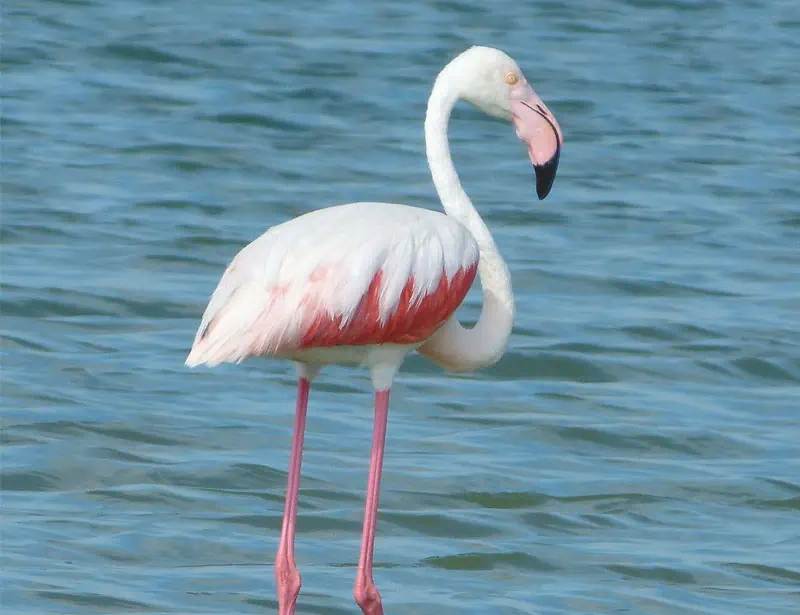
The Greater Flamingo, the largest of its kind, is 43 to 59 inches in height. Its habitat spans the globe, with key populations in the Middle East, Europe, Asia, and Africa.
This bird displays pinkish-white plumage, black flight feathers, and red wing coverts. Its pink bill features a black tip, and its skin, legs, and webbed feet are also pink. Its eyes are yellow.
The birds’ pink hue came from their food source, colored by carotenoid pigments. Their diet consists mainly of tiny shrimp, seeds, blue-green algae, microscopic organisms, and mollusks sifted from muddy coastal lagoons.
Young chicks are born with gray fluffy down. As they mature, their coat becomes lighter. Adults also become paler when feeding the young, but their bright pink legs remain.
2. Lesser Flamingo (Phoeniconaias minor)
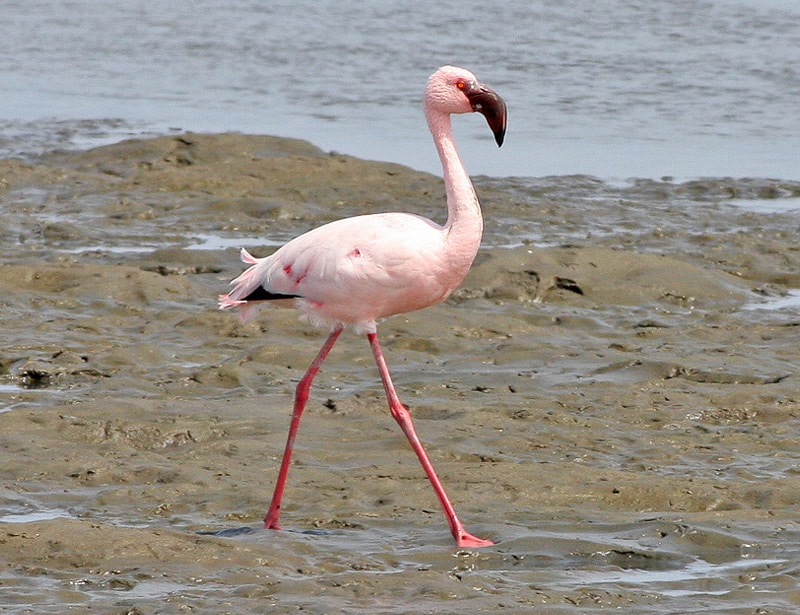
The Lesser Flamingo is the smallest of its kind, measuring roughly 31 to 35 inches. Commonly found in Southern Africa, these birds possess a fraction of the continent's charm.
Their appearance is quite distinctive. They sport pinkish-white plumage and a long neck. Dark red beaks topped with a black tip are prominent. Yellow-orange eyes peer from faces marked with a reddish-brown ring. The contrast of black primary and secondary flight feathers, red coverts, and long pink legs completes their identifying features.
These flamingos feed mainly on Spirulina, a special kind of algae. Found in highly alkaline lakes, the presence of these Lesser Flamingos signals water unsuitable for irrigation.
3. Andean Flamingo (Phoenicoparrus andinus)
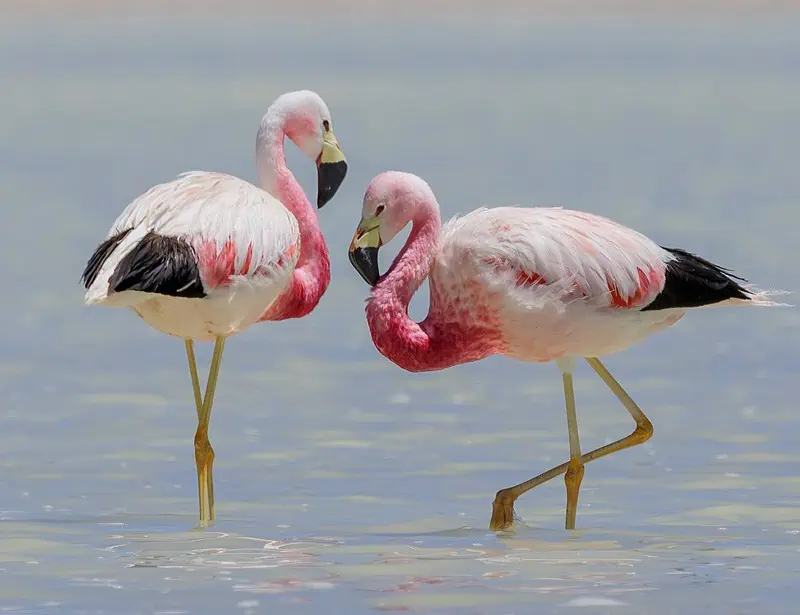
Hailing from South America's Chilean Andes, the Andean Flamingo is characterized by light pink plumage and a darker red head, neck, and upper breast. Its yellow legs and feet stand out—a unique feature among flamingos. Its yellow bill with an extensive black tip curved contrasts its dark red-brown eyes.
They are flexible in their diet, filtering various foods, from fish to microscopic algae. Moreover, they're migratory creatures. In the summer, they inhabit salt lakes, and in the winter, they trek down to the low-lying wetlands.
Unfortunately, the Andean Flamingo population has severely declined over recent generations. Exploitation and habitat deterioration play major roles in this decline. Despite a more stable population, its depletion is still worse than past numbers. Consequently, Andean Flamingos have the IUCN vulnerable status1.
4. Chilean Flamingo (Phoenicopterus chilensis)
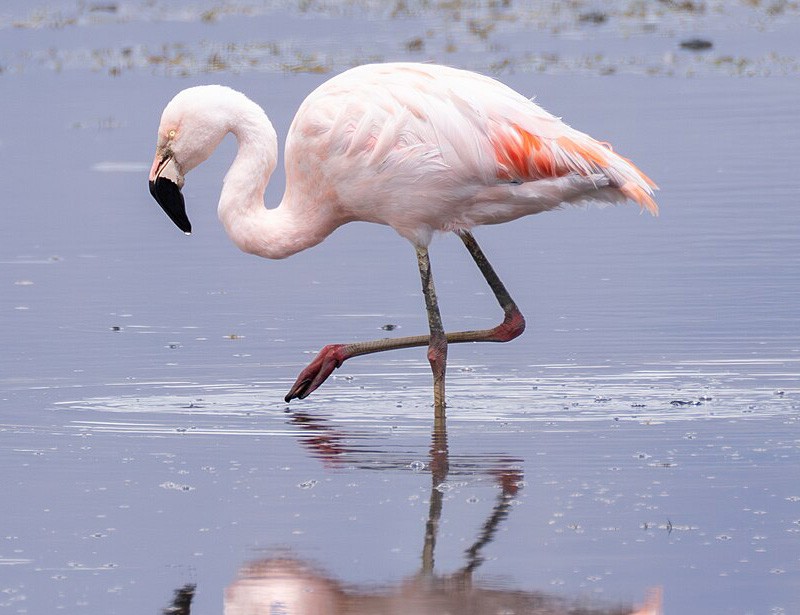
The Chilean Flamingo is a flamingo species distributed throughout the temperate regions of South America. Its territory stretches from central Peru through the Andes and Uruguay to Tierra del Fuego. The flamingo's presence, marked by pink plumage, is a sight familiar in these regions.
These birds have pink plumage, red wing coverts, and black flight feathers. Unlike other flamingos, the Chilean flamingos have long greyish legs with pink leg joints and webbed feet, a pink beak with a predominantly black section, and pale yellow eyes.
5. Puna Flamingo (Phoenicoparrus jamesi)
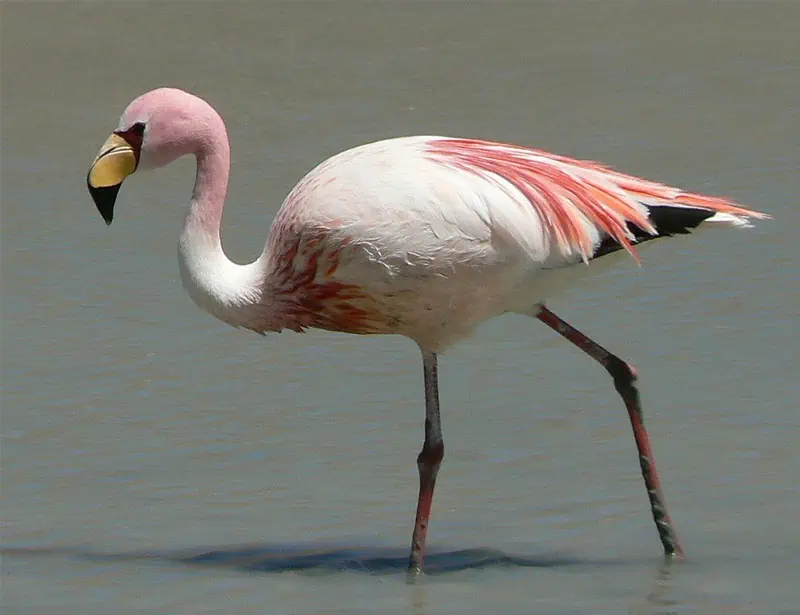
The Puna Flamingo finds home in South America's high Andean wetlands and is particularly prevalent in Bolivia's summer breeding grounds. Also called James's Flamingo, it owes its alternate name to British naturalist Harry Berkeley James.
The Puna Flamingo has a long neck that facilitates ample head mobility. It is further characterized by elongated, thin legs with invisible knees at the top. The flamingo's pale pink plumage is accentuated by carmine streaks around the neck and back, with black primary flight feathers. This type of flamingo also has red skin around the eyes, a bright yellow beak sporting a black tip, and red legs.
6. Caribbean Flamingo (Phoenicopterus ruber)

The Caribbean Flamingo, otherwise known as the American flamingo, resides mostly in South America, the West Indies, and tropical regions of North America.
Distinguished by its deep pink plumage and red wing coverts, it blends less with its paler Greater Flamingo counterparts. This species, the largest New World flamingos, also sports a pink and white bill with a substantial black tip.
Once populous in South Florida and the Florida Keys, the number of American flamingos decreased significantly around 1900. Today, Florida considers the American flamingo an emblematic symbol, owing mainly to the marketing strategy of the Flamingo Hotel in Miami Beach.
Types of Flamingos FAQs
The six types of flamingos are the American flamingo, Greater flamingo, Chilean flamingo, Lesser flamingo, Andean flamingo, and James's flamingo.
The rarest species of flamingo is the Andean flamingo, found primarily in the high-altitude regions of the Andes Mountains. The latest census for this vulnerable species reveals 38,675 individuals.
Flamingos are pink due to their diet rich in beta-carotene, a red-orange pigment in high quantities in organisms like shrimp and blue-green algae.
Most flamingos sport some shade of pink, though intensity varies among species. They lose their pigments when their habitat lacks beta-carotene-rich food or when they are busy taking care of their chicks.
Flamingo birds face several threats, including habitat loss due to industrialization, pollution, and climate change. Egg collection and hunting also pose significant risks to flamingo populations in some regions.
| 1 |
BirdLife International. (2020). Phoenicoparrus andinus. The IUCN Red List of Threatened Species 2020: e.T22697387A182422217. |
Isabela is a determined millennial passionate about continuously seeking out ways to make an impact. With a bachelor of science degree in civil engineering with honors, Isabela’s research expertise and interest in artistic works, coupled with a creative mindset, offers readers a fresh take on different environmental, social, and personal development topics.

